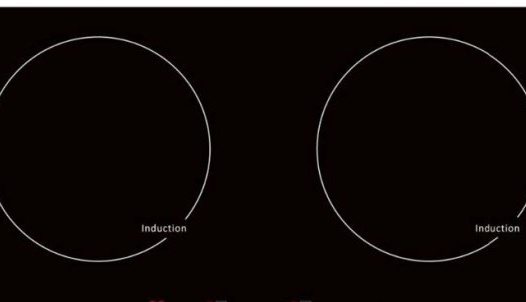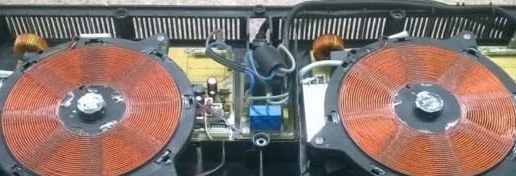
My wife and I ordered on ebay, on New Year's Eve, 2019, a built-in induction hob. We chose a good, German, from the company kitchen-and-home. Not the cheapest, however.
Here is such a beautiful ... wife chose.
It is only now that I understand that it was necessary to go right away, buy the simplest induction panel there and not get out.
The package arrived, though I was a little confused by the departure address, Hong Kong, but nothing crashed along the way, everything was fine and beautiful.
They brought home, stuck it in the socket ... and silence.
Well, what can you do ... magic words and memories about the mother of the manufacturer did not help, I had to climb over a curly hex screwdriver.
A quick inspection did not give anything, everything is in place, everything is beautiful, there are no short circuits and burned parts.

Taking the tester, I found out that the fuse and rectifier are in order, nothing is shorted and short-circuited. Along the way, it turned out that all the boards and all the details, including the wires, are Chinese, hieroglyphs everywhere.
I decided to check the power cord. Cliff! Not believing his eyes, he unscrewed the power board and was stupefied - the wires of the power cord were soldered to the board ... without cleaning the insulation! They just stuck a wire in isolation in a hole and stuck it with tin.
After stripping and soldering the network wires, the panel turned on and ... it worked.
However, in China there is no concept of OTC, they do not check the equipment, they only make it ...
But as the further operation of this induction hob showed, the problem got out in a completely different place, one might say ... from the finger.
Exactly, from the finger. Despite its Chinese origin, I still have no complaints about the operation of the panel. All that is needed, she does. But to the management, or rather to the principle of its management and inclusion - there are complaints.
The control of this panel is touch-sensitive, produced by “light touch” of a finger. On the one hand, it is convenient. Pressed - turned on, chose the power, set the time and ... let's go!

The thing turned out to be powerful and fast, unlike gas or electric stoves. But as soon as the saucepan with the soup or the kettle begins to boil, if you don’t follow, the contents splash out a little on the panel. So what, you say, with whom it doesn’t happen, and on the gas stove too, and the milk runs off and the soup ... nothing, you will wash later.
Yeah, but not here. Spilled liquid enters the closely spaced control sensors, and the stove begins to create the devil knows what.
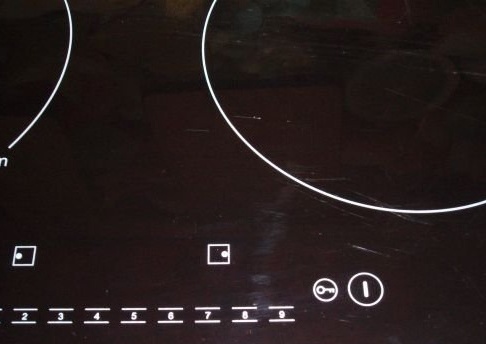
And no matter how you try to press something or turn it off, the panel no longer listens to your hands, lives its own life, blinks something, turns on something ... until the water dries up or until the sensors are wiped. And you can’t clean the dishes - it’s forbidden to do so in the instructions! C'mon, modes or minutes would go astray there, she suddenly has some kind of powerful overload, she beeps and ... is cut down. And then it does not turn on. For the first time after the sensors flooded with soup, the fuse burned out. I replaced him.
After some time, water spilled again. In addition to the fuse, the power transistor was also knocked out. Type IRG4PH40UD, for 550 rubles, which I brought to order, in a local electronics store. When the boiled kettle "ran away" again, and the fuse burned out again, I realized that soon the transistor would have to be changed again. And it somehow turns out a little expensive, is not it?
A solution to the problem was found. I bought a powerful plug in electrical appliances with a switch and an indicator for 16 Amps 220V, put it instead of the standard plug on the power cord from the panel.
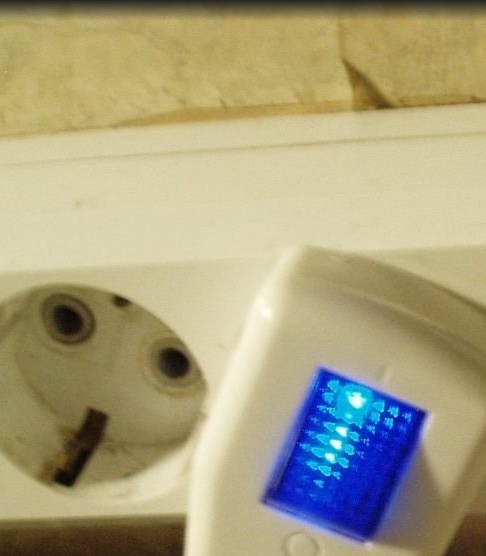
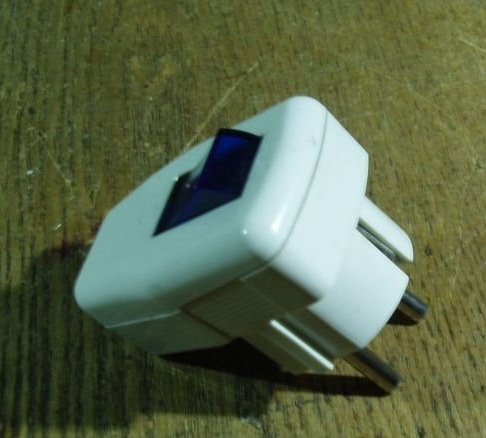
And now, if something starts to run away on the panel, quickly turn off the plug on the outlet, remove the pan from the panel and calmly wipe the surface over the sensors flooded with water. For some time, I have in stock to reach the outlet while the transistors are overloading. Then we put everything back, turn on the panel, and continue our cooking.
And one more subtlety: when I installed the panel in the kitchen, I aligned it strictly horizontally, in level. Now, I raised its front edge a little, by 3 millimeters, so that the spilled liquid drains faster towards the back of the panel.
Of course, I bought another power transistor in reserve, but I hope that it will no longer be needed.
I was not too lazy, I wrote about this problem and about how to solve it on the manufacturer’s website, in Germany, but so far there is no answer.
Apparently the Germans have forgotten the Russian language over the past 70 years ...

